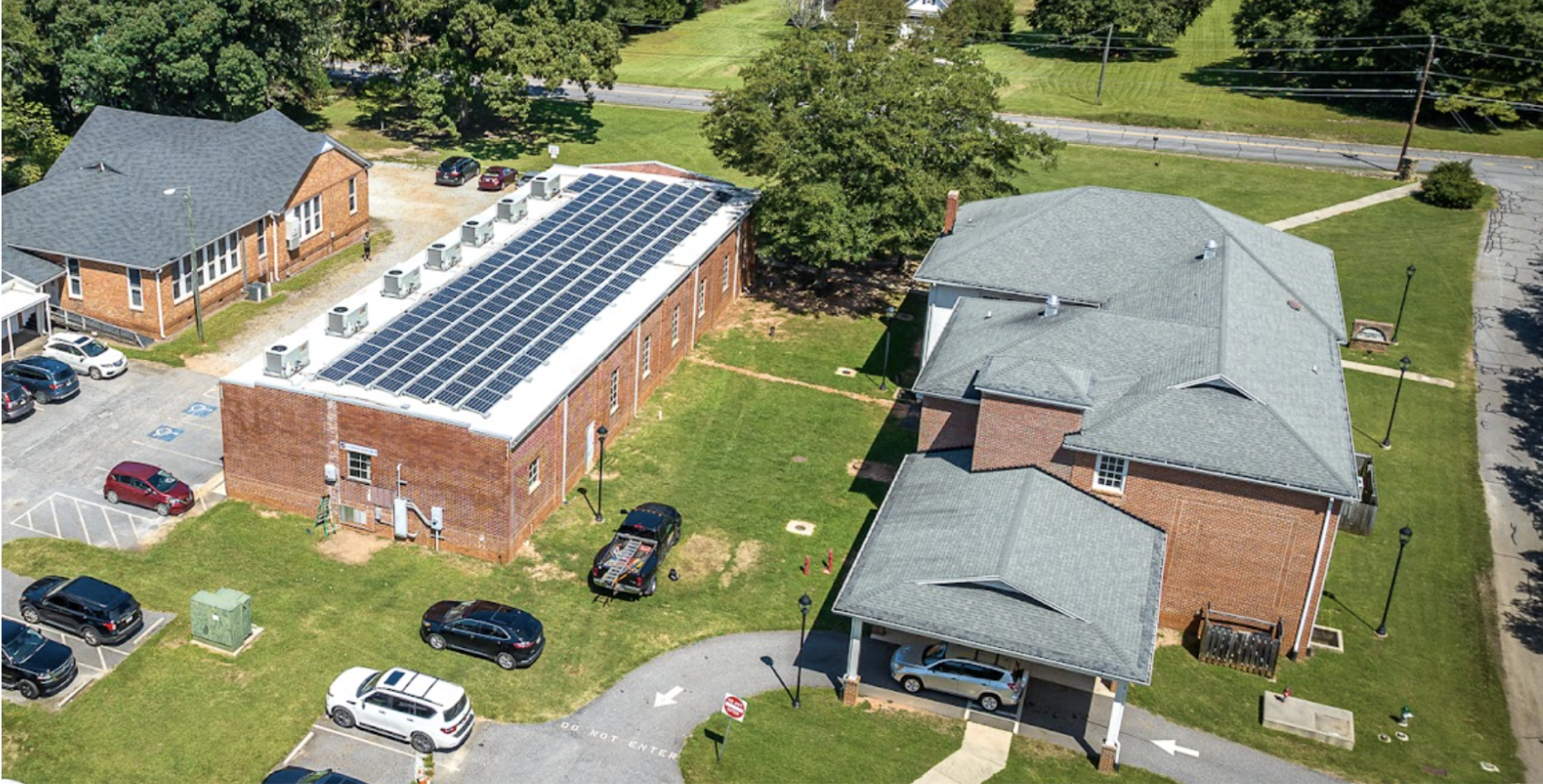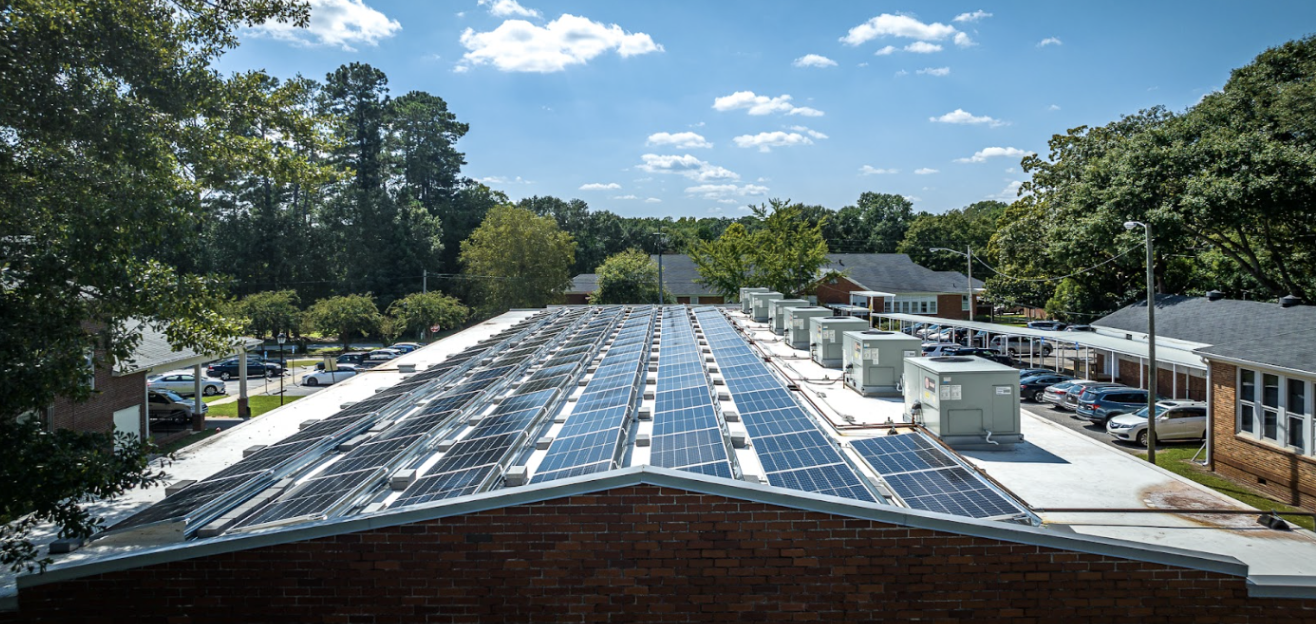Clean Energy Generation member Bruce Johnson spoke with SACE about leading his small town of Winterville, Georgia on a path to 100% clean renewable energy – and about how you don't have to be an expert to start taking climate action in your community today.
Reed Winckler | July 21, 2023 | Clean Energy Generation, Climate Change, Georgia, SolarAt the end of June, the Southern Alliance for Clean Energy hosted our first Clean Energy Generation webinar. We talked about the myriad of actions, big and small, we can all take to help create a comfortable, healthy, and environmentally sustainable world, starting today. We all have a role to play in the Clean Energy Generation, no matter where we come from, how old we are, how much money we make, or what our abilities are.
To create healthier communities where we can all thrive, we must recognize the urgency of the moment and take decisive action together now. It starts with baby steps – asking questions and joining together as neighbors, students, and friends to decide which specific climate-actions could benefit our communities.
SACE member Bruce Johnson spoke during our recent webinar. Bruce is motivated by his vision of a world where clean energy has replaced decades of dirty and polluting fossil fuel reliance. Keeping with his philosophy to “think globally and act locally,” Bruce is taking action in his small community of Winterville, Georgia, population 1,200, to help make this vision a reality. Bruce has served on the Winterville City Council since 2022 and leads the effort to generate 100% of the city’s energy needs from renewable sources.
Read on to learn more about how Bruce found a place for himself and the city of Winterville in the Clean Energy Generation.
How did you first get involved in taking climate action in your community and leading Winterville to 100% clean energy?
Like a lot of people, I’ve been concerned about climate change for a long time. I started the 100% Winterville Clean Renewable Energy initiative in fall 2021, the goal of which is to convert the City of Winterville government to 100% clean renewable energy, with the city meeting its electricity energy needs by 2035 and all other energy needs by the year 2050.
I started by reaching out to like-minded individuals and organizations that had done these types of projects to learn as much as I could. The way to accomplish that goal [of being a 100% clean renewable energy city] is to harvest renewable energy in an amount that is greater than or equal to the amount that we pull from the electricity grid. What I found out in my early research is that the way to do it is solar, which is available everywhere everyday. Right now, we literally have clean renewable energy falling from the sky; we just need to do a better job of collecting it and using it.
I found out about a grant from the Georgia Environmental Finance Authority – a state agency that provides funds for renewable energy projects (there are similar agencies in other states that may be resources for funding) – through my connections with the Athens-Clarke County Sustainability Office. Until I read that grant, I’d never read a grant application in my life. In fact, I didn’t even learn about the deadline for that grant until the day before it was due. I contacted the grant agency and they were very helpful; they told me the key pieces I needed to have and what I could already fill in on the application. You’ll find that when you reach out, you can find people who want to help you.
That night, I called our mayor. I wasn’t yet on the city council. I told him, “We got a chance at this grant, but you have to help me and you have to sign it.” So he cleared his calendar for the next afternoon, I took the day off, and we ended up getting the grant: just a few weeks ago, Winterville got a check for $105,000, which paid for most of the Winterville Cultural Center solar project.
Explain your first solar project on the roof of the Winterville Cultural Center.
This first project was a 102-panel solar array of 39-kilowatt capacity, installed on the roof of the Marigold Auditorium and Arts Center, helping offset power consumption for the auditorium and the Winterville Cultural Center next door. It powers a battery backup system at our Cultural Center, which is important for our community because our Cultural Center also serves as our emergency shelter. In the event of a disaster, we may have to house families that have been displaced from their homes, and that battery backup system has enough stored power to keep the lights on, keep the refrigerator running to store food, keep the equipment needed to access the internet running, and power a small portable heat and AC unit to keep folks comfortable until power can be restored.


The future five projects I have lined up in the next few years will come to offset power at seven government-owned buildings, including City Hall, our fire station, police station, library, Doctors Museum, non-profit bookstore, and the offices of our Marigold Collective, which runs our farmers market and provides food for families in need.
Last year, I authored a resolution that makes a real binding commitment from the city to those goals. It was passed unanimously last fall by our mayor and city council, and I also got our mayor to sign the Sierra Club’s Mayor Pledge, which commits the mayor to working towards those same goals. I’ll continue to work on more projects like these until we reach that 100% clean renewable energy goal.
How did you secure buy-in from the city council and residents for the solar project?
First I’d say to know your audience. There are a lot of folks that are concerned about climate change, but there are a lot of folks that really don’t care about that. But you have another angle that’s great: everybody likes saving money.
One way to get buy-in from your elected officials especially is to let them know about tax credits available from the Inflation Reduction Act. The federal government recently implemented a direct pay option in which, for future renewable energy projects like mine, entities like local municipalities can get 30% direct payment back from the IRS on the project. The applications and guidance for that application are not out yet, but when they come likely later this year, I’m sure organizations like SACE will spread the word, and that will be an opportunity you can share with your elected officials.

What advice do you have for someone trying to replicate your efforts elsewhere, especially in a community that is less open-minded about environmental issues?
There are some folks I’ve talked to in Winterville that aren’t excited about [the environmental and climate benefits of energy conservation], but when I tell them that I am offsetting power in two buildings with money from a grant and other funding – not one penny from our general budget – and it’s going to save money on our electric bills for the next 25 years…well, everybody likes to save money. You don’t always have to push the environmental aspect.
Outreach and education are also really important. I’ve got a buddy who is a graphic designer to design a logo for me, I created a FaceBook page, I made a few banners, and I show up at community events where I spend the whole day talking to people about these projects. Often I have citizens come up that have no idea the project even existed because they can’t see the panels on the roof.
What has the reaction in Winterville been?
My response has been really positive. The outreach aspect is important to let people know what you’re doing and why you’re doing it, whether it’s “we can save some money” or “we can do something really good for the environment.” That’s why I go to all these local events to spread the word. Once I tell my story, you see people light up and say, “I had no idea this was happening in my community.” It’s important because I’ve only done one project, and I’ve got five more. I need approval from the city council and they need to know the community supports it.
What would you say to someone who’s not an expert but wants to take action in their community?
You don’t have to be an expert; I wasn’t an expert in solar or grant writing. What you have to be is persistent, and you have to be willing to learn, to go out and find a few like-minded people.
If a small city like Winterville, where we have only 1,200 people and a small city budget, can make this kind of a commitment to tackling climate change, then I think any community can.
Join the Clean Energy Generation
Like Bruce, you don’t have to be an expert to start taking climate action in your community today. Regardless of your zip code, or whether you live in a big city or a small town like Winterville, you have the power as part of the Clean Energy Generation to create a healthy and sustainable world. As Bruce put it: “We’re making a difference in Winterville, but what if there were 10,000 Wintervilles across this country? That’s when it becomes transformative.”
Join the Clean Energy Generation
#CEGMemberStories